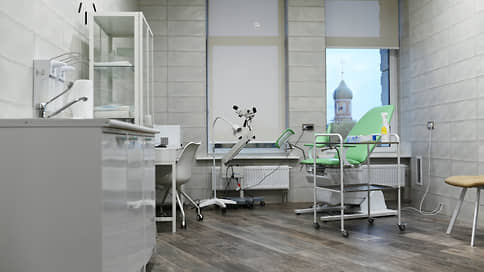The Ministry of Health proposed examination by a gynecologist from the age of 13
[ad_1]

The age for preventive examinations of girls by a gynecologist is being reduced from 14 to 13 years, according to the draft order of the Russian Ministry of Health. The chief freelance gynecologist for children and youth of the Ministry of Health, Elena Uvarova, said that the change is fundamentally important for preserving the reproductive health of girls. The gynecologists with whom Kommersant spoke supported the initiative. According to them, doctors are now recording both earlier puberty and an earlier age at the onset of sexual activity.
Ministry of Health offers change the age of the first school examination of girls by an obstetrician-gynecologist during preventive medical examinations from 14 to 13 years. To this end, the Ministry intends to amend the column “Examinations by medical specialists” of Appendix No. 1 to the “Procedure for Preventive Medical Examinations of Minors”: paragraph 27 after the position “ophthalmologist” should be supplemented with the position “obstetrician-gynecologist” (for girls). “In the context of a modern approach aimed at early detection of reproductive health diseases in adolescents, taking into account the physiological development of reproductive function, it is necessary to reconsider the conduct of preventive medical examinations of minors by an obstetrician-gynecologist (for girls), changing the age of examination from 14 years to 13 years,” – says the explanatory note to the project.
Elena Uvarova, chief freelance gynecologist for children and youth at the Russian Ministry of Health, explained that the change will help provide assistance in a more timely manner and identify developmental pathologies. “For example, if a girl at 13 years old does not have mammary glands, this is already a significant delay in sexual development, indicating that something is going wrong. Additionally, the average age of first menstruation worldwide is between 11.8 and 12.4 years, so by age 13, most girls will already have menstruated. If they are not there, then this is already a problem that only a doctor can help sort out,” she said (quote from TASS).
Elena Uvarova added that painful menstruation (dysmenorrhea), “when no medications help,” may indicate endometriosis. This disease, according to Ms. Uvarova, is a “modern women’s pandemic”: “In a few years, endometriosis can reach serious proportions, so even one year is important for maintaining the health of a girl.” The Ministry of Health expert emphasized that if treatment is started at an early age, the patient is more likely not to have to resort to “assisted reproductive technologies.”
Gynecologist of the Doctis telemedicine service, reproductive specialist, gynecologist for minors Margarita Denisenko points out that, according to the current order of the Ministry of Health No. 514n, preventive examinations of girls are carried out at 3, 6, 14, 15, 16 and 17 years. They are necessary for the prevention of diseases of the reproductive system, as well as for identifying deviations in sexual development. “Currently, there is a trend towards earlier puberty among girls. Just a few years ago, its first signs—the growth of the mammary glands—appeared at the age of 10–11, and approximately two or three years later, at the age of 13–14, menarche—the first menstruation—commented, comments Ms. Denisenko. “Now is the age of onset of puberty.” maturation has shifted by one to two years, that is, the first signs appear already at 8–9 years, and, accordingly, the first menstruation comes at approximately 10–12 years.”
Obstetrician-gynecologist, ultrasound diagnostics doctor at the Nearmedic clinic on Maroseyka, Elizaveta Soloid, is confident that any obstetrician-gynecologist will support the initiative of the Ministry of Health.
“In our practice, we often encounter the problem of lost time. This concerns sex education for adolescents, information about the mechanisms of transmission of STIs and options for protection against them, timely selection of contraceptive methods, prevention and treatment of many gynecological diseases, and abnormal development of the genital organs, which begin to manifest themselves from the age of 11–13.” Ms. Soloid added that doctors today note a decrease in the age of coitarche (first sexual intercourse). Therefore, the task of a pediatric gynecologist is an “early preventive examination,” which also includes a conversation about contraception and the risks of contracting STIs, such as the human papillomavirus. “If we are talking about gynecological pathology, which can subsequently lead to a decrease in reproductive function, then here it is also necessary to diagnose the disease in a timely manner and begin to treat it, without waiting for complications to develop,” adds Ms. Soloid.
Clinical psychologist of the medical technical company “Doctor is near” Olesya Tolstukhina points out that Lowering the screening age for girls may have several goals. First of all, she says, if there are symptoms of serious illnesses, including those leading to amenorrhea (lack of menstruation), it is better to start treating them as early as possible.
“Secondly, the qualifications of a pediatrician in terms of communication skills with patients are of great importance. Despite all the openness of information in the world, the topic of sex life and sexuality is still very taboo in society; mothers rarely provide girls with adequate information about the transformations of the female body. When children’s fantasies collide with reality, a delay in the development of a psychogenic character may occur or, conversely, an abnormal acceleration of processes. If the doctor delicately and competently accompanies the examination with explanations and answers to the girl’s questions, then such a meeting will be very useful.
Thirdly, the doctor can detect signs of abuse and refer the child to specialists for the necessary clarification.”
[ad_2]
Source link








